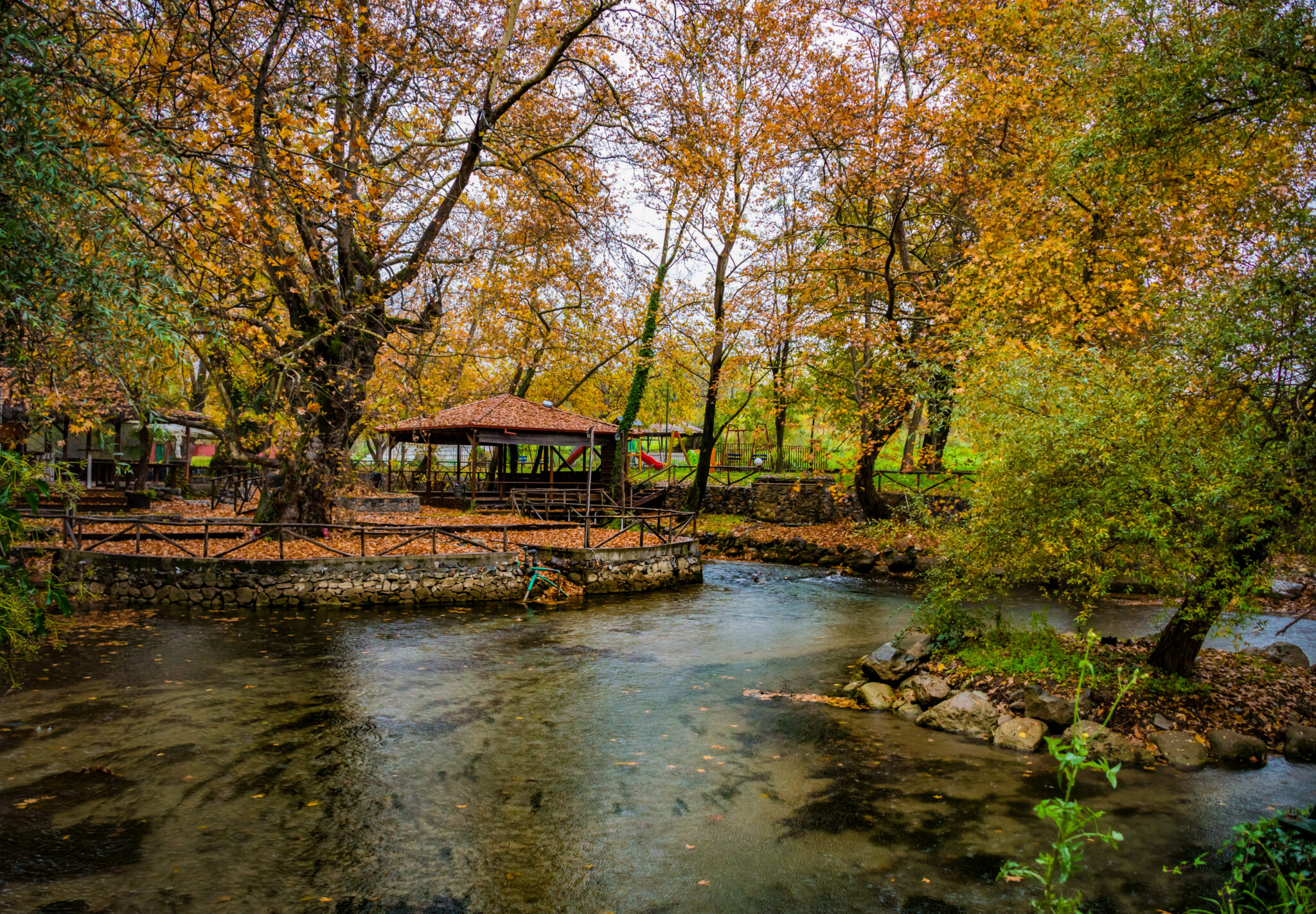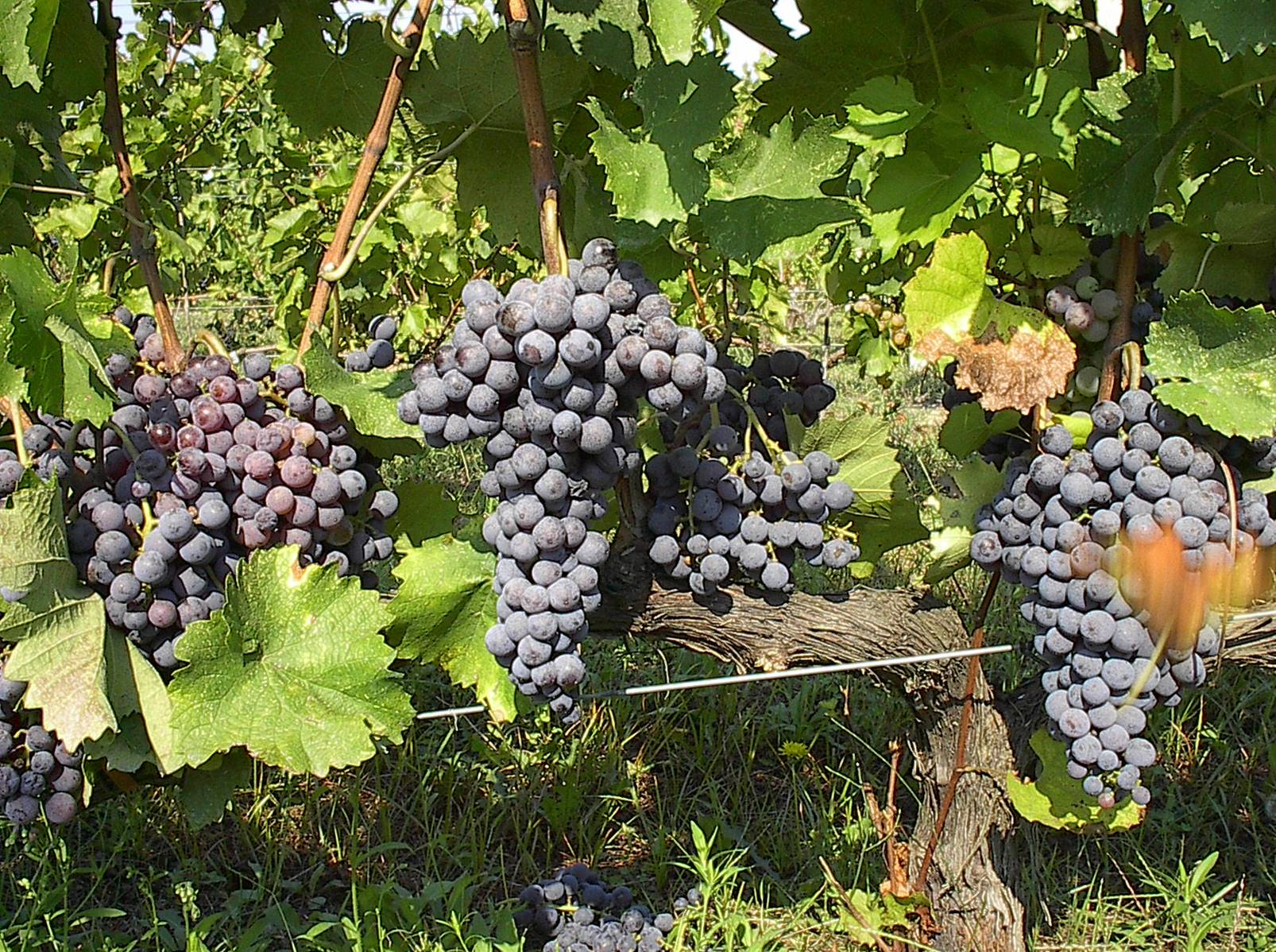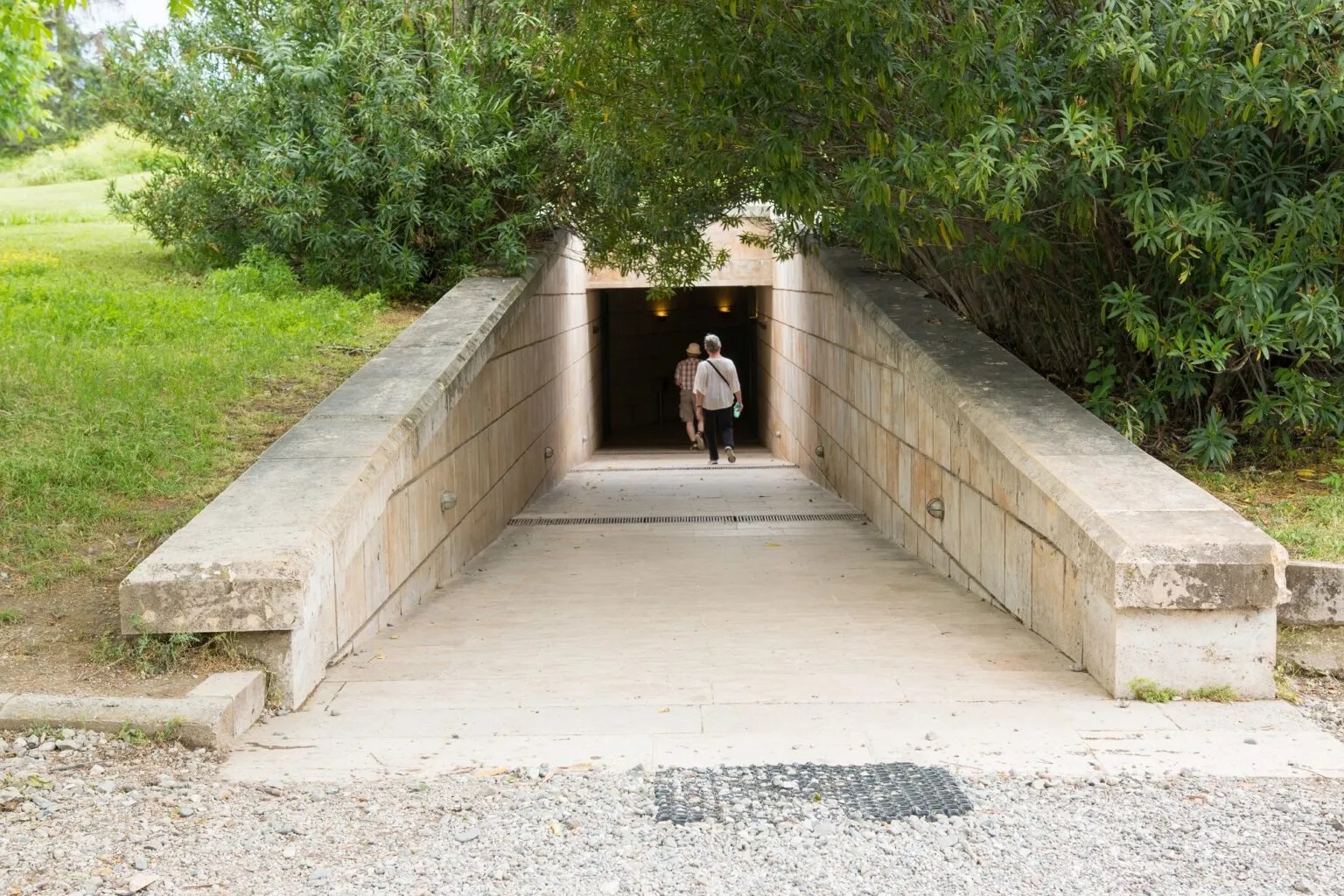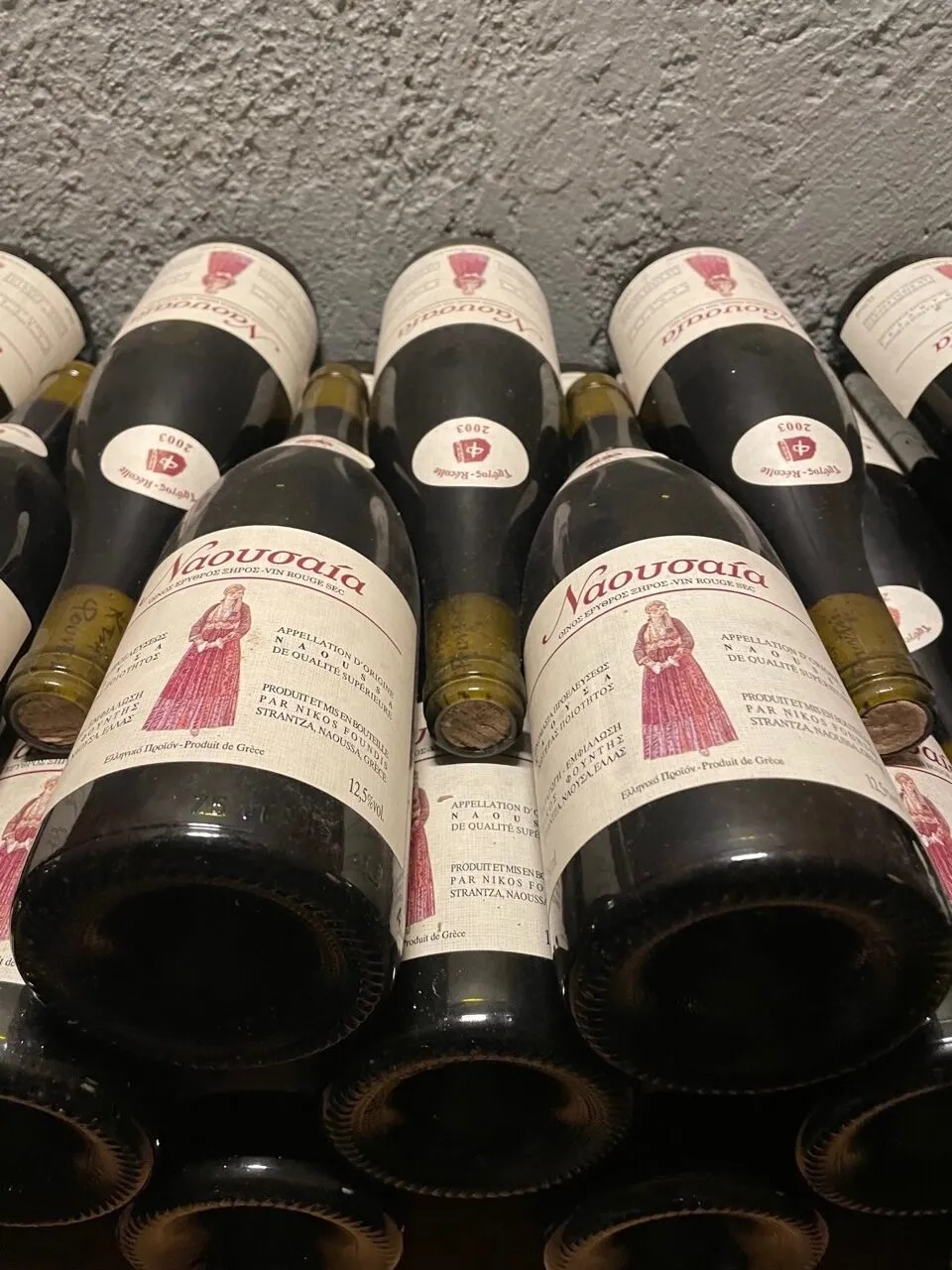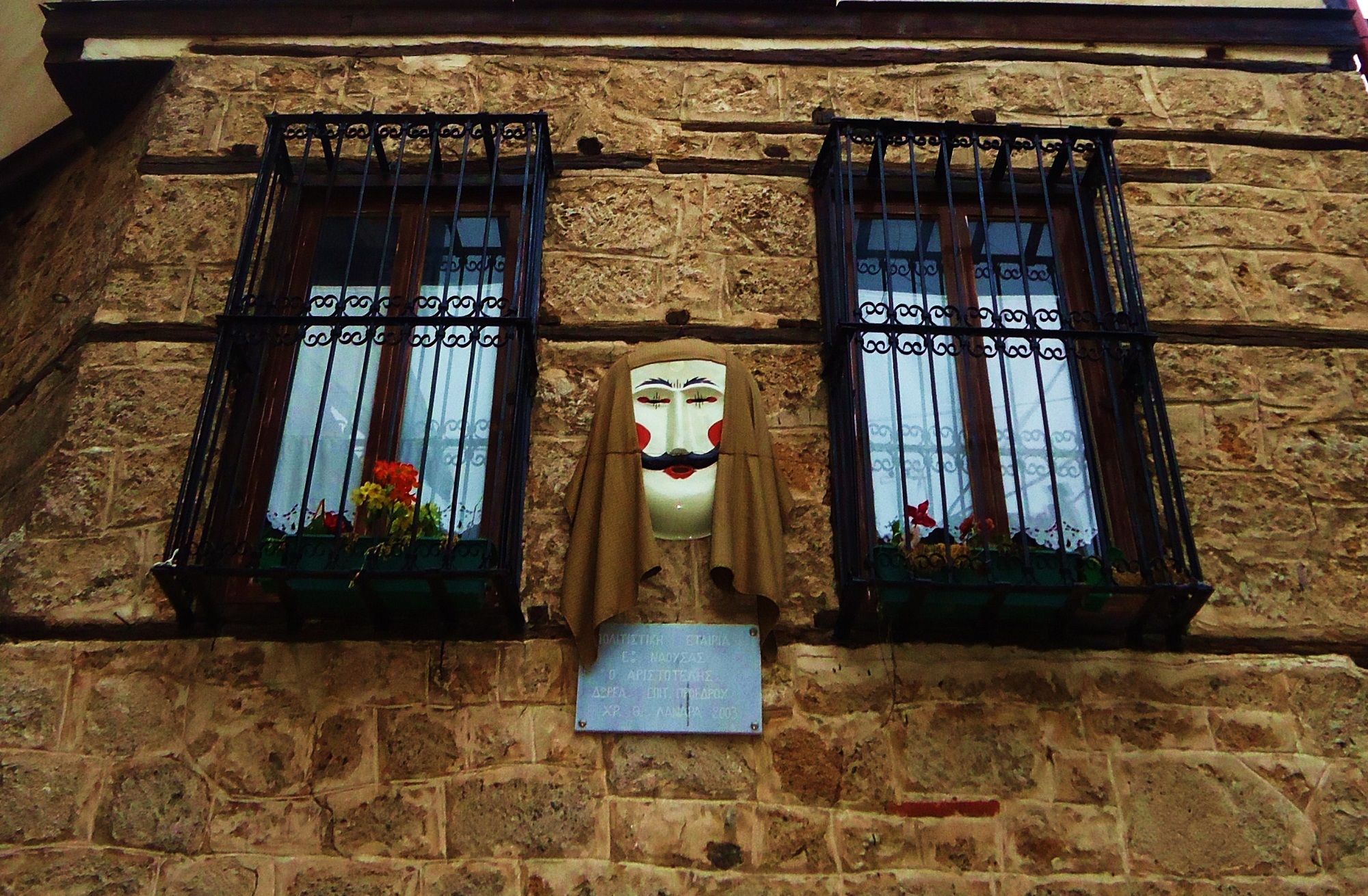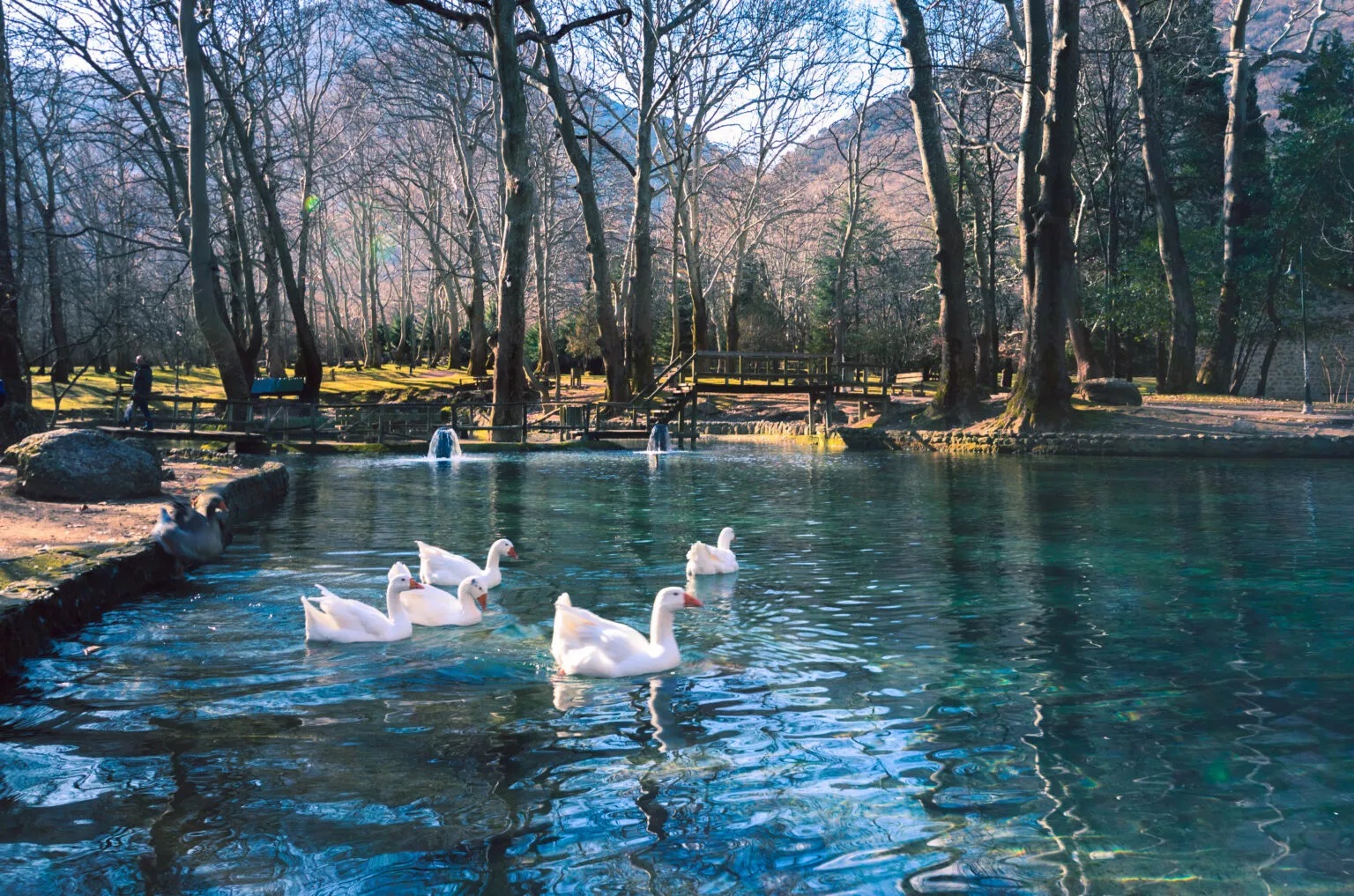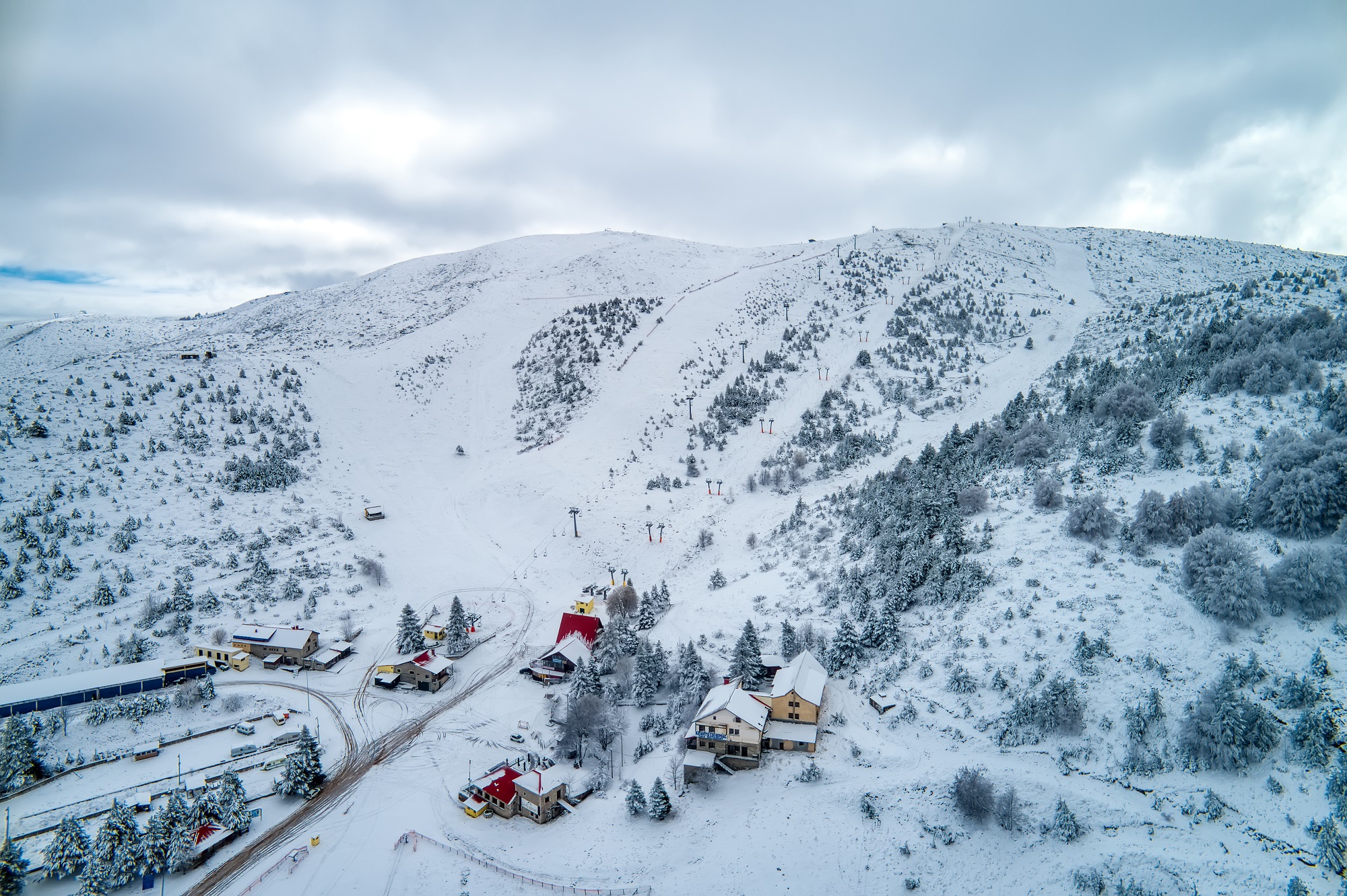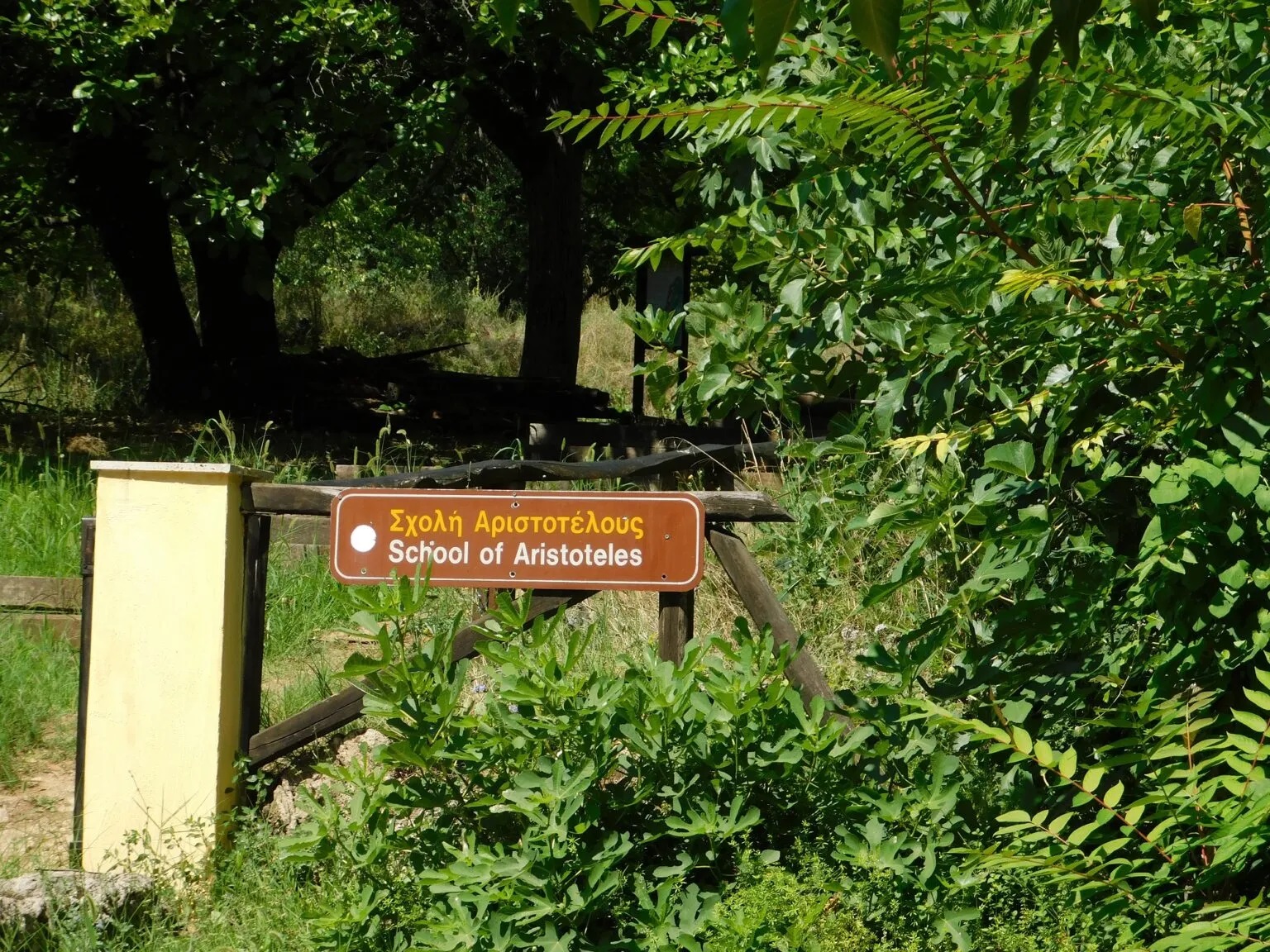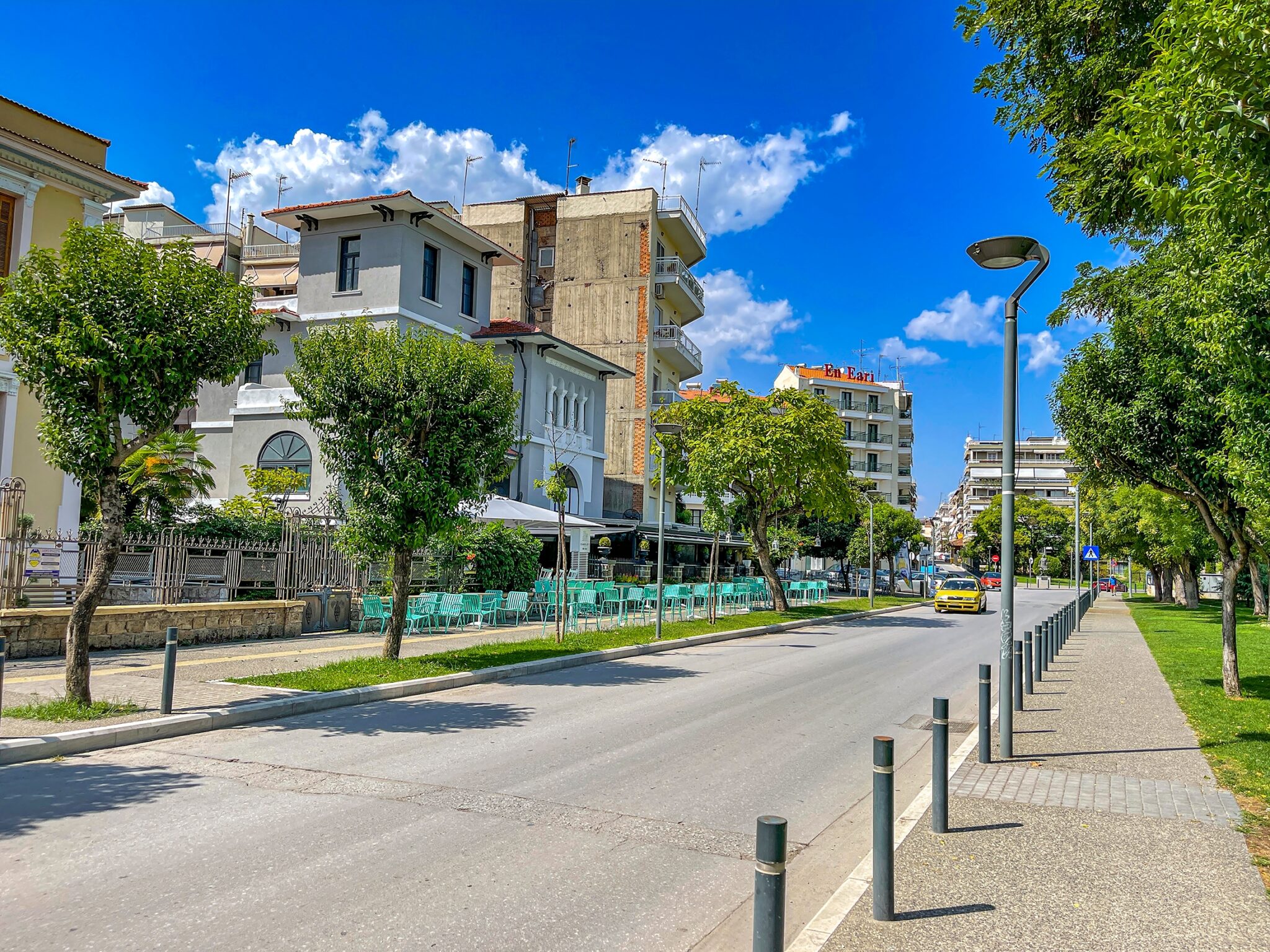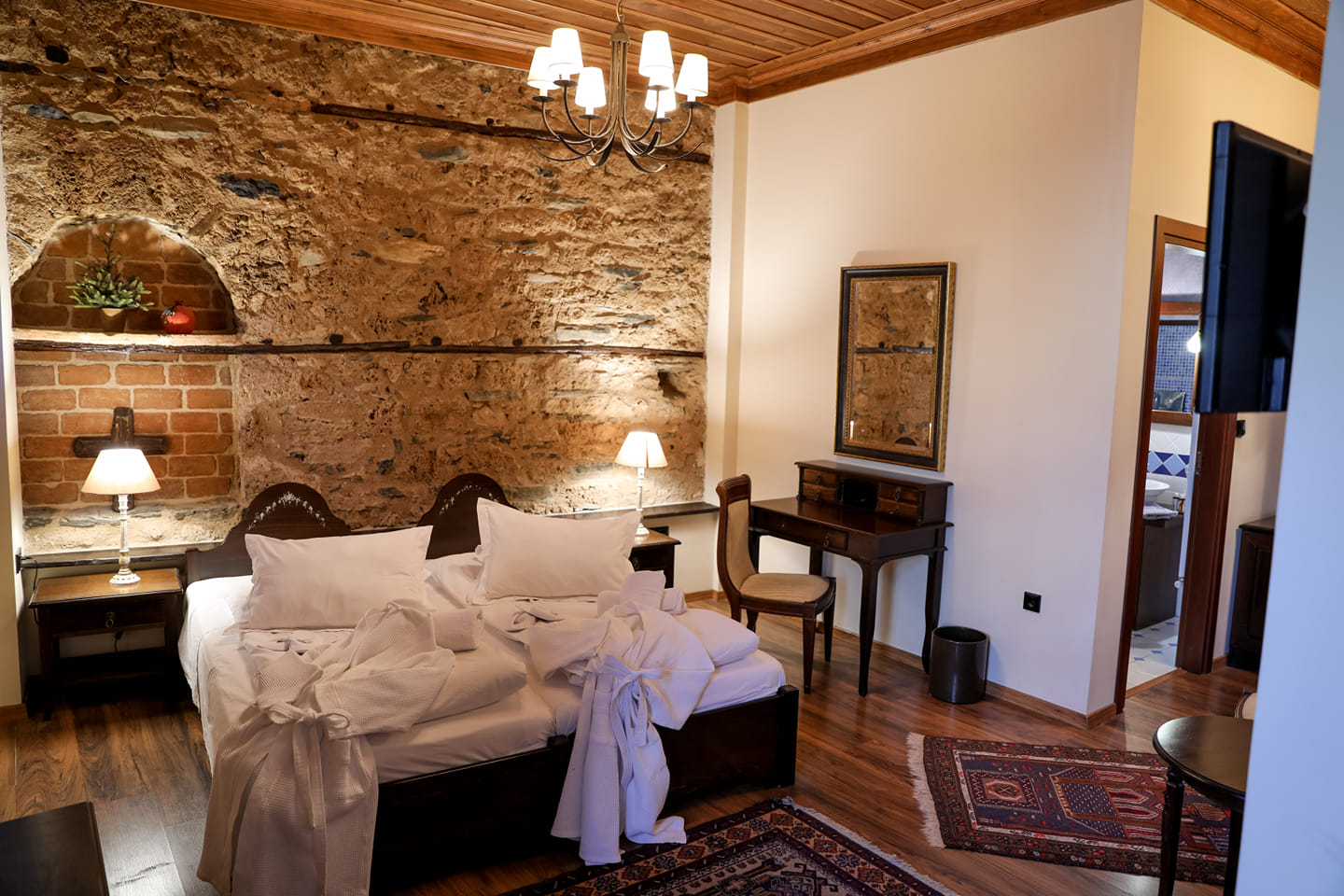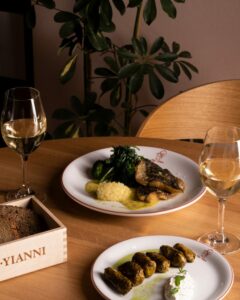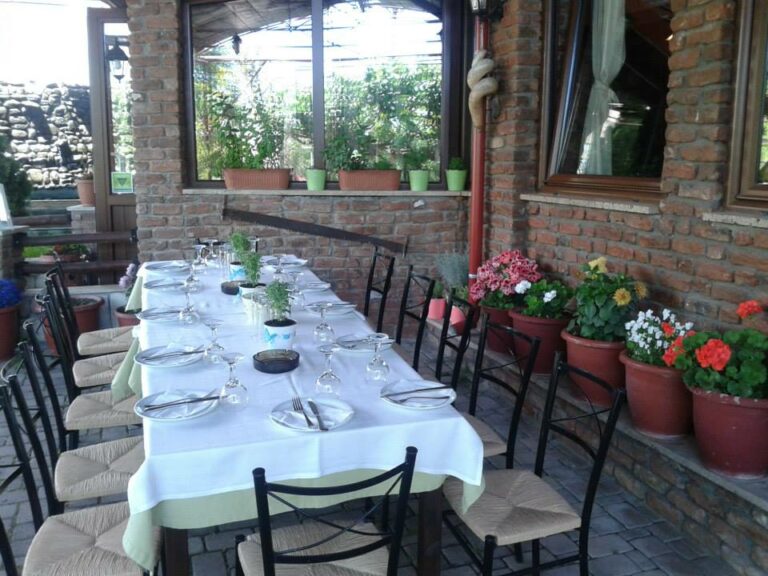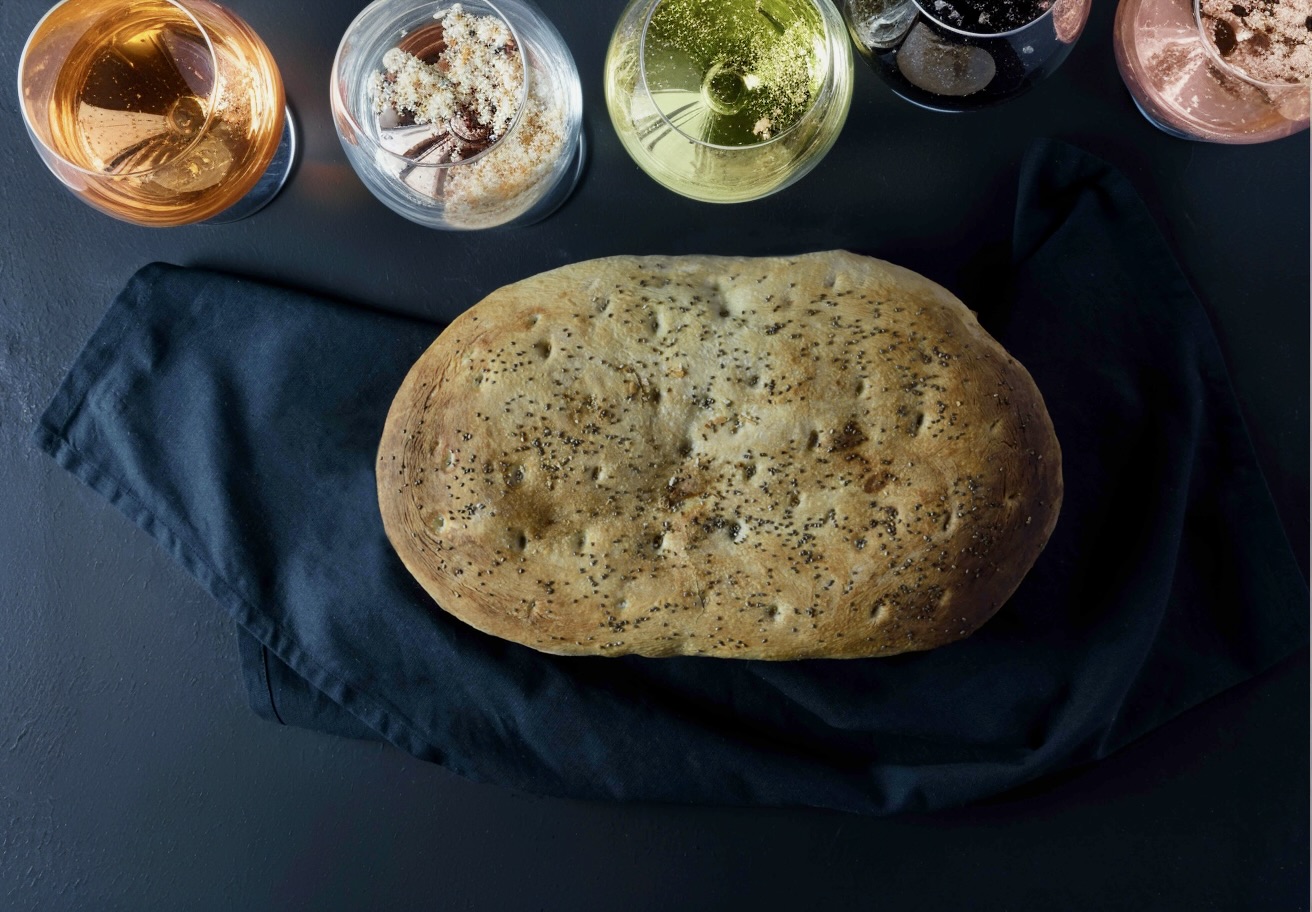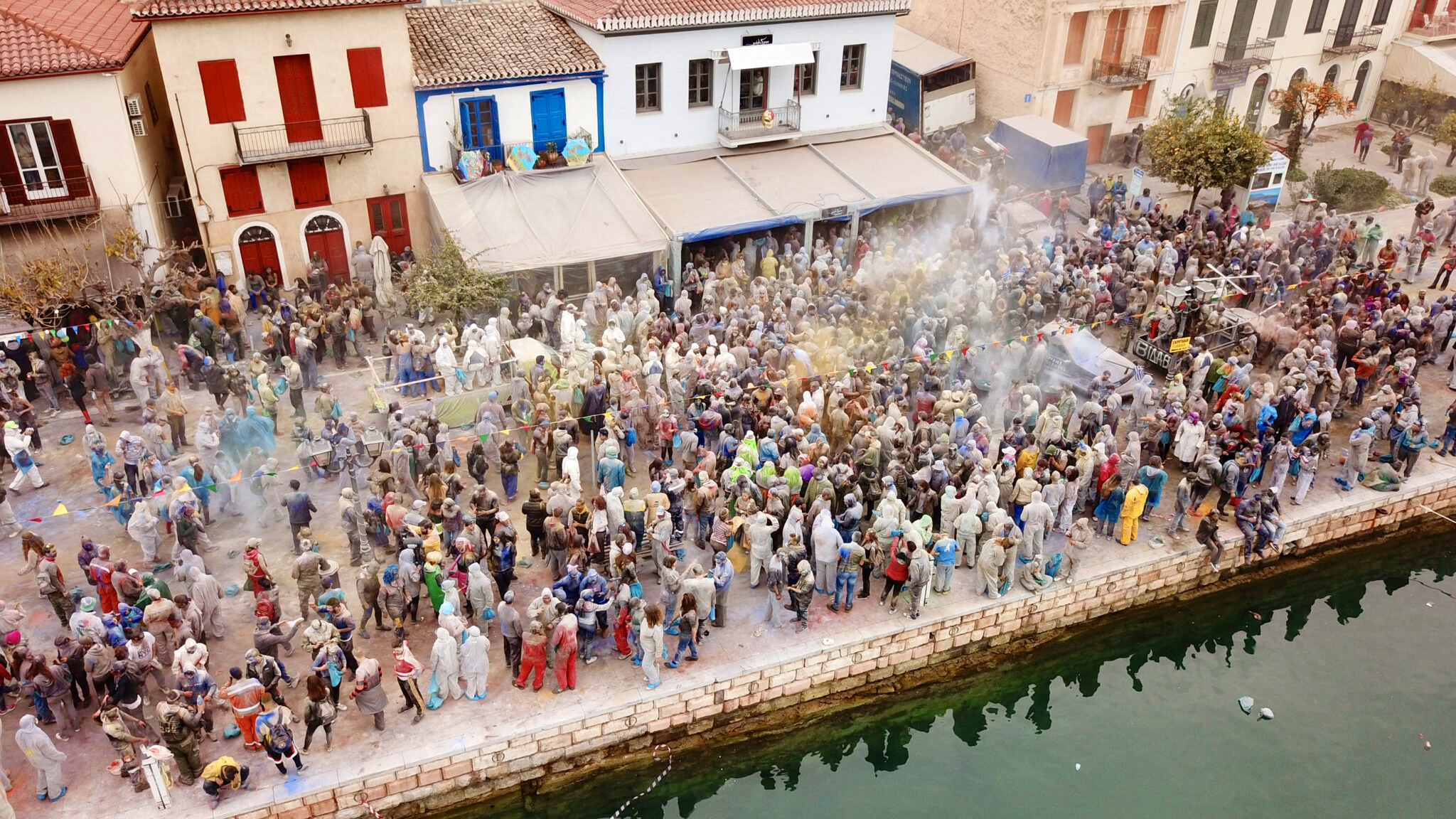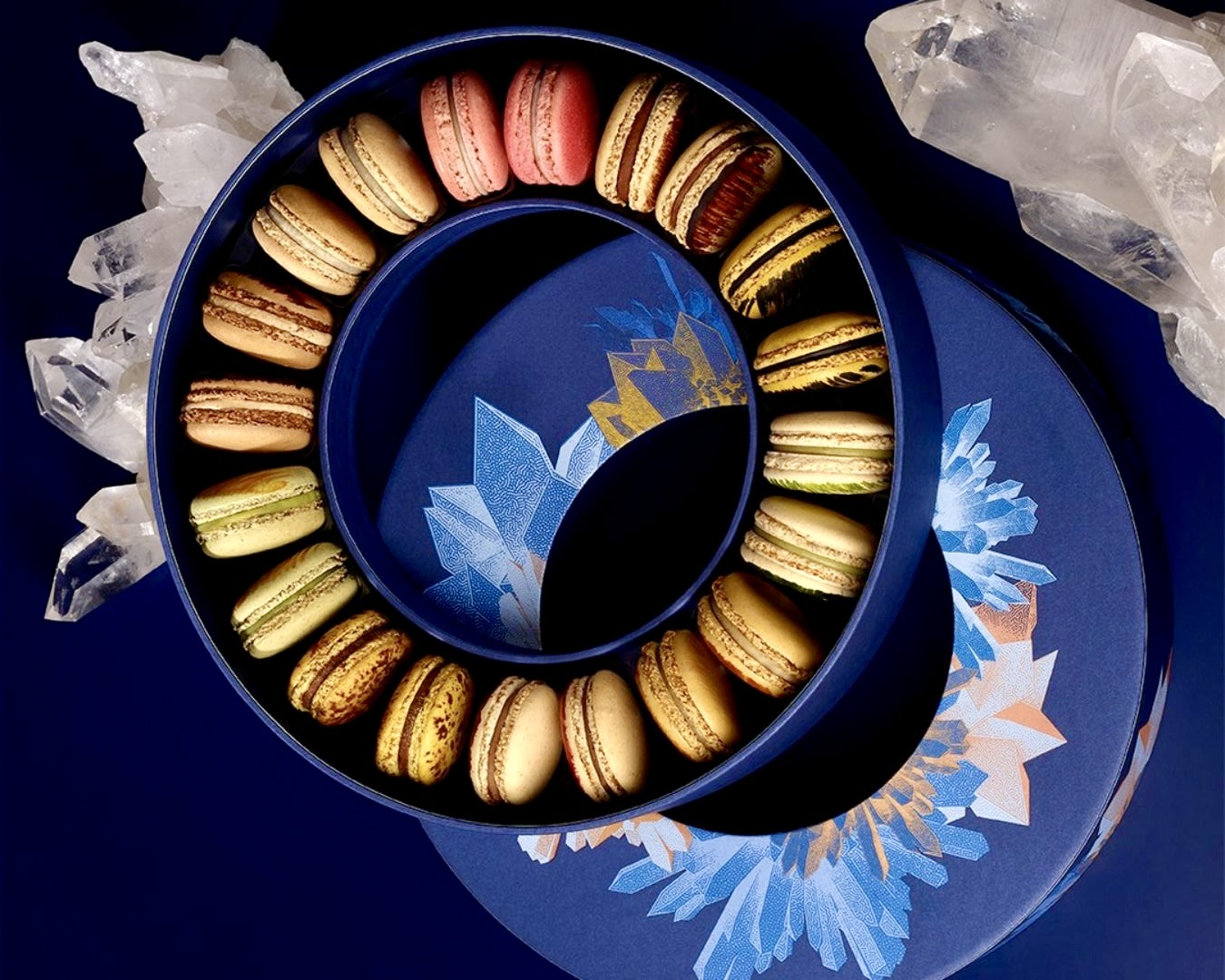Built on the foothills of mount Vermio, Naoussa is a city with history, interesting sights, special flavours, but also home to celebrated vineyards and wineries, making fine wines.
All the above make the mountainous city of Imathia one of the most interesting travel destinations in the already attractive central Macedonia region, gaining it the title “land of Xinomavro”. A title that makes sense, since this unconventional but charming variety of wine –with its intense red colour, beautiful aromas and strong tannins, reminiscent of Pinot Noir– is produced here.
Meanwhile, the link between a good life and wine drinking seems to have deep roots in local time, as ancient mythology tells us that Semeli, the mother of the god Dionysus, was born in Vermio. In more recent times, the vineyards of Naoussa suffered great damages due to phylloxera. But from 1968 onwards, the Boutaris company –with Konstantinos & Giannis Boutaris at the helm – replanted about 500 acres of Xinomavro around Giannakohori.
Nowadays, apart from the Xinomavro, the varieties Negoska, Naousseiko, Sefka, Prekniariko, as well as so-called Local Wines of Imathia are also grown in the area. Younger winemakers are also entering the field, slowly reviving the Naoussa wine-growing zone, which has been registered as a Protected Designation of Origin Zone. Xinomavro, of course, is still the finest red variety in northern Greece, making Naoussa one of the most famous wine-producing areas in all of Macedonia. It also retains the OPAP (Appellation of Origin of Superior Quality) designation.
Naoussa of wine
Most of the wineries in the city and the wider region are open to visitors, being members of the “Wine Roads of Northern Greece” (www.wineroads.gr). They are also included in the “Naoussa Wine Route”, the largest part of which extends to the boundaries of the municipality of the same name, which is the second largest in the prefecture of Imathia (23.000 inhabitants), including the former communities of Arkohori, Giannakohori, Rodohori and Stenimacho. There is no better way to get acquainted with the local wine culture than to follow this route.
Well acclimatized to continental climates, Xinomavro is grown on many mountain slopes in central Macedonia, as far away as Pindos, Thessaly, and Greece’s border with North Macedonia. Apart from Naoussa, it is also found in Amindeo, Goumenissa, Pella, Siatista, Grevena, Velvento, Metsovo and Rapsani.
The Wine Route starts from Veria, 74 kilometres from Thessaloniki, and from the small village of Vergina –world-famous for the museum of the same name, where momentous archaeological finds are kept. You must absolutely visit the museum, and it’s best to do it with a guide, if you want to understand the magic of ancient Macedonia.
The road then goes up to Bagratsa and continues in the peripheral areas of Naoussa: Stenimacho, Mademi, Giannakohori, Nea Stranza and Episkopi. It is a landscape full of alternating, undulating slopes, dotted with the famous vineyards. The route ends, of course, in Naoussa, whose natural balcony-park overlooking the valley offers travellers a perfect stopping spot.
The wineries you can visit are:
Taralas Estate, Patrida
Boutari, Stenimacho
Kir-Yianni Giannakohori
Foundi Estate, Nea Stranza
Vaeni, Episkopi
Argatia Winery, Rodohori
Argirakis, Tripotamos
Diamantakos Winery, Mantemi
Efstratia Tazoglidou, Amygdalia Trilofos
However, there are many other remarkable estates in the area, such as:
Ktima Diamantakos, 5 Bourdanou str, Naoussa
Chrysochou Estate, Nea Stranza
Tsantali, Railway Station
Chateau Pegasus (Markovitis), Pola Nera
Kastanioti, Naoussa
Melitzani, Naoussa
Dalamara Winery, Naoussa
Domaine Karydas, Naoussa
Ktima Kelesidis, Giannakohori
Karanatsiou, on the 1st km of the Naoussa – 3-5 Pigadia road
Elinos, plantation in neighbouring Veria
What else is worth seeing in Naoussa
Apart from wine, Naoussa also had a golden age with the textile industries that developed there in the 19th century, as the Arapitsa river that runs through town made it particularly suitable for this profession. Vetlans Naoussa was once world-famous, although it has not stood the test of time. Today, most of these beautiful industrial buildings have been handed over to the municipality as Industrial Heritage and are about to be returned to the residents and visitors of the city as places of recreation and culture.
So, let’s start with a walk through the old neighbourhoods – Alonia, Puliana and Batania. The rich mansions, the imposing public buildings, the thematic Wine and Vine Museum, and the traditional Macedonian houses take you on a journey to a glorious past. A trademark is the Clock Tower, located in front of the Town Hall. It was built in 1985, using limestone, and it stands 25 meters high. The new meeting point for the residents, however, has become the new Obelisk, in the main square.
Next stop is the Municipal Park, where there’s an artificial lake, wooden bridges, alleys, fountains, and paved paths. Here, you’ll see ducks, pigeons, peacocks, and squirrels, but you’ll also enjoy the wonderful view of the plain of Imathia. And, of course, you’ll also pass by the place of Sacrifice, where in 1822 – during the massacre of Naoussa– several women of the city preferred to throw themselves and their children into the waters of Arapitsa, rather than be captured by the Ottomans. Thus, after the establishment of the Greek state, Naoussa was declared “heroic” by royal decree and a monumental statue of a woman from Naoussa with children in her arms was built at the site of the sacrifice, in Stubani.
At 3 km from the city, you can visit the Agios Nikolaos Grove, which has been declared a place of outstanding natural beauty. It is a green area with huge plane trees, crossed by the Arapitsa river. It includes a small artificial lake with trout and ducks, basketball, volleyball and tennis courts, a playground, restaurants, taverns, and cafes. Finally, if you find yourself in Naoussa during carnival season, the Genitsari and Boules custom is a unique traditional event.
Nearby getaways
Arkohori, Giannakohori –where the Holy Monastery of Timios Prodromos, an important attraction, is located– and Rodohori, the Pontian village of Imathia, are worth visiting.
In general, the region is a skiing paradise, with 3-5 Pigadia resort being a great destination for winter sports enthusiasts. It is located at an altitude of 1,430-2,005 meters, with a snowmaking system. In addition, there is Seli at an altitude of 1,530 – 1,890 meters, which is the first organized ski resort in Greece.
Further attractions include the Macedonian Tombs of Judgement and of the Flowers (of the Palmettes) in Leukadia, two of the best-preserved monuments of ancient Mieza, as well as the city’s ancient theatre, which has been renovated. In the first tomb there is also a rare painted decoration, dating back to the end of the 4th century BC.
In general, Mieza a city thrived during the years of the Macedonian kings, especially during the period when it hosted the famous School of Aristotle, where he taught young nobles “moral and political reason”. In fact, Alexander the Great was among his students, between 343 and 340 BC, before moving to Pella. The School was located at Nympheon, outside present-day Naoussa. Nowadays, on the opposite side of the road, there is the Cultural Centre, which is dedicated to it: visitors can learn about the history and the archaeological site through the audio-visual material available.
Of course, starting from Naoussa, you can visit two other beautiful cities in northern Greece: Veria, which is also the capital of Imathia, and Edessa, with its famous waterfalls. In Veria, it is worth passing by the Apostle Paul’s Tribune (Bema), the place where the Apostle Paul taught during his visit there between 50 and 60 AD.
In addition, there are famous Byzantine and post-Byzantine churches, such as the Holy Monastery of Timios Prodromos or Panagia Soumela, chapels on the lush green foothills of Vermio, and of course the traditional districts of Barbuta (Jewish) and Kyriotissa, with their old houses with wooden balconies. Last but not least on the attraction list, Arapitsa: the river that shapes Naoussa with its passage and has always been its driving force. That’s why they call it “white coal”, after all.
Accommodation options
Palea Poli
Palea Poli is a nine-room boutique hotel in a stone industrial building that was built in 1900, which used to house a silk factory. There are rooms with a fireplace and also a restaurant.
Dellagio Hotel
In the heart of the city, modern and fresh, with subtle luxury and atmospheric design.
Esperides SPA Hotel
Double rooms, two suites with a fireplace, massage, hammam and hydro massage. Atmospheric, with exquisite glasswork and bicycle friendly.
Sfendamos Wood Village
A stone’s throw from the ski resort 3-5 Pigadia, you’ll find 7 wooden bungalows (made of tree trunks), with a cosy main building, restaurant, and wine bar.
The Kir-Yianni Estate has a restaurant inside the winery, offering a unique experience. Photo: Ktima Kir-Yianni
Dining options
Ktima Kir-Yianni
New (relatively) arrival, one of the first restaurants inside a winery. The space where the wine tastings used to take place was renovated and turned into an impeccable restaurant with excellent flavours from chef Kyriaki Fotopoulou, combined with the estate’s wines. A unique experience.
Palea Poli
In a very elegant space, on the ground floor of the guesthouse, there is a cafe-piano bar-restaurant. Excellent international cuisine flavours, including some traditional options, accompanied by the best local wines.
Oinomagiremata
It has been in operation since 1964, something that speaks volumes about its flavours. One of the best restaurants in Naoussa.
Spondi
Well-kept place, extensive and delicious cuisine with local and creative dishes, and an updated wine cellar. A city destination.
Rakokazano
Just outside Naoussa, a traditional tavern next to the family’s raki distillery (which can be visited), with Macedonian cuisine and a wood-burning oven.
Tesseris Epohes
Wonderful location just before the grove of Agios Nikolaos, serving local dishes with Cretan influences.
Harama
A trip to Arkohori is a must to eat at this very good restaurant.
Read also:
A city in Macedonia stands out for its unique gastronomy
Stathmos Angistas: A village of 150 inhabitants built in the “Grand Canyon” of Macedonia, Greece



